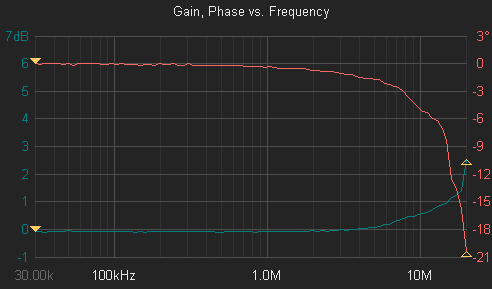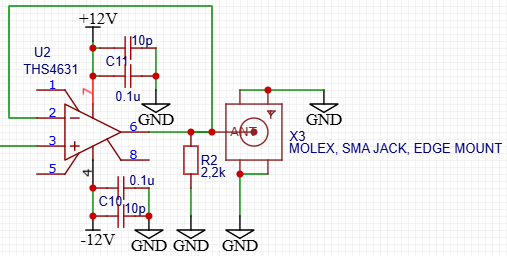Tool/software:
Hello everyone,
I’m bringing this topic up again because I still can’t solve the problem of this circuit overheating. I chose this IC to build a buffer (voltage follower) with a gain of 1 V/V, in order to match the impedance of the measuring system. I assembled a classic voltage follower circuit. I tested the characteristics and, from what I can see, everything seems to work as it should — except for one thing: the package gets extremely hot.
I’ve already redesigned the PCB twice; in the latest configuration I even flipped the IC and soldered a heatsink directly to its tab to ensure the best possible heat dissipation. But even in this setup, the heatsink temperature reaches 86 °C. Is such a temperature normal for this IC?
The supply is bipolar ±12 V, and during tests I apply a sine wave with 1 V amplitude at the input. As a load I currently use a 2.2 kΩ resistor, but I’ve also tried values from 50 Ω to 1 MΩ, and it doesn’t solve the problem.






